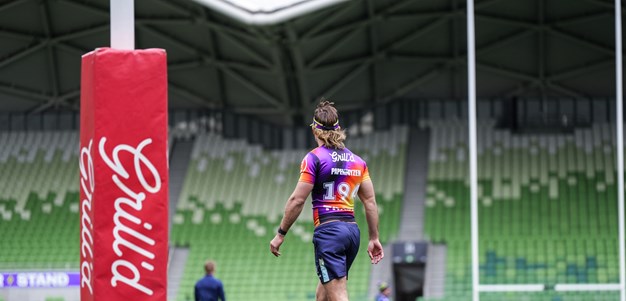
There is a cost to bringing the NRL back ahead of the other codes and it's the players and club staff who are paying it.
Via Roy Ward / The Age.
That cost is in the time and mental energy spent every day to adhere to the strict NRL protocols and it will continue until the grand final is completed late in October.
Melbourne Storm players and staff have explained how these work ahead of their return game against Canberra Raiders at AAMI Park on Saturday.
A maximum of 50 people, players and staff, are allowed into the "green zone" within AAMI Park, which has one entry in and out and is a fully sanitised area with office space, locker rooms, eating areas and the playing field.
That's 32 players and 18 essential on-field staff, like coaches, team managers and a multimedia man to record it all.
"It starts first thing in the morning when you wake up," Storm football director Frank Ponissi said.
"Everyone in the 50 fills out questions on an NRL phone app, like, do you have these [COVID-19] symptoms? Where you went the previous 24 hours, and they all have an ear thermometer to make sure their temperature is below 37.2 degrees.
"If they have symptoms or their temperature is high our club doctor is informed and they are told to stay at home and a COVID-19 tester is sent out to them."
That happens every day whether it's a day off or a game day. NRL clubs are bracing for the possibility players or staff will miss games with a running nose or sore throat and squads have been extended from 19 to 20 players.
"We will have a few other guys on stand-by at home," Storm coach Craig Bellamy said in an online media conference.















